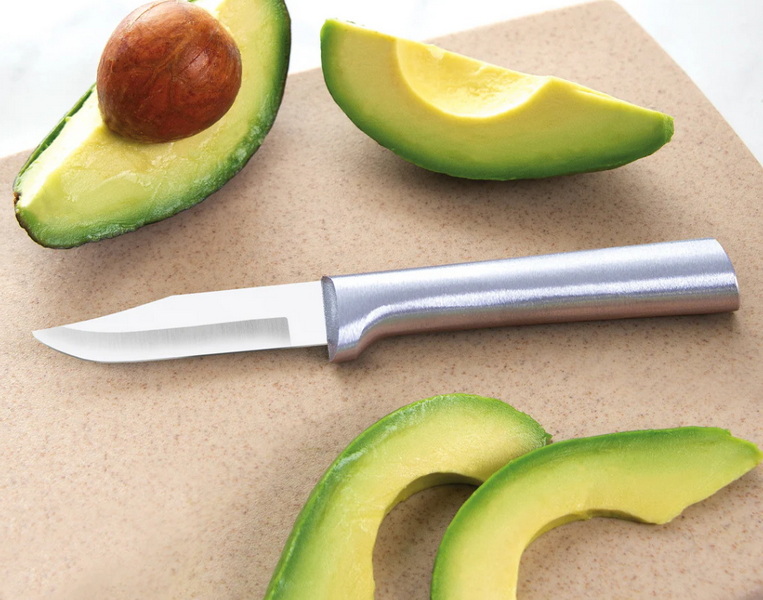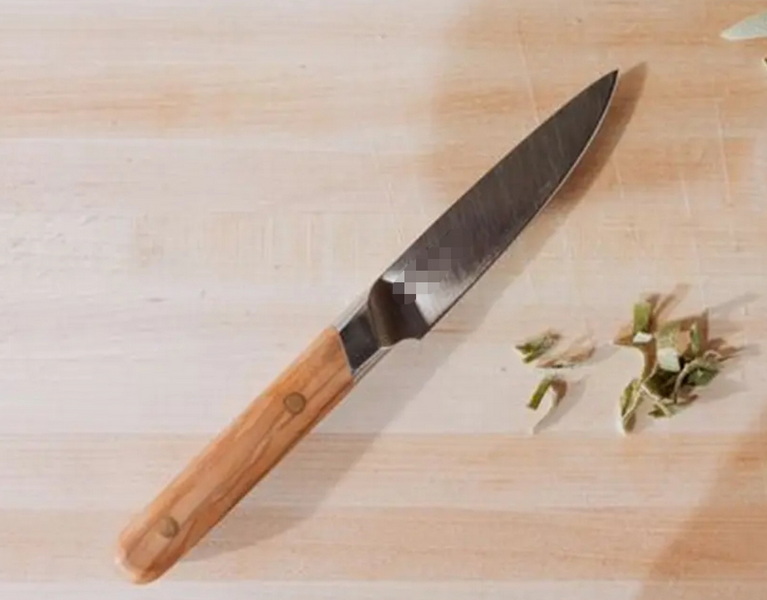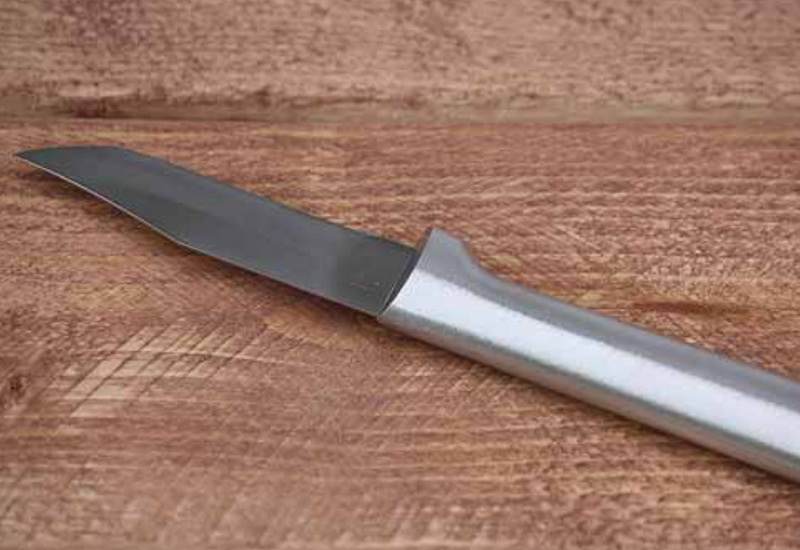- All
- Product Name
- Product Keyword
- Product Model
- Product Summary
- Product Description
- Multi Field Search
Views: 222 Author: Ann Publish Time: 2025-10-25 Origin: Site











Content Menu
● Design considerations for OEM projects
● Design considerations for OEM projects
● Key Differences: A Side-by-Side Look
● Materials and Construction Considerations
● Materials and Knife Care Media
● OEM Brand Considerations for Paring and Peeling Knives
● Product Photography and Video: Practical Shots
● Select Case Studies: OEM Success Scenarios
● FAQs
>> What tasks can a paring knife perform that peeling knives cannot?
>> When should a peeling knife be preferred over a paring knife?
>> What blade material is best for OEM kitchen knives?
>> How should paring and peeling knives be cared for to maximize longevity?
>> Can paring knives and peeling knives be customized with logos and branding?
In professional kitchens, culinary schools, and home cooking alike, the right small knife can dramatically influence efficiency, precision, and safety. This guide delves into the nuanced differences between paring knives and peeling knives, clarifying their distinct roles, optimal use cases, and implications for OEM branding and product development. By exploring blade geometry, materials, handling, and media strategy, buyers and brand partners can make informed decisions when sourcing Paring Knives for OEM programs. Paring Knives form a core component of many OEM knife lines, offering opportunities for branding, customization, and value storytelling.

A paring knife is a versatile, compact tool designed for precision work on small tasks. Its blade typically ranges from 3 to 4 inches (about 75–100 mm) in length, with a straight or slightly curved edge that tapers to a sharp point. The design prioritizes control, allowing for delicate trimming, peeling, mincing herbs, de-veining shrimp, trimming fat, and creating decorative garnishes. In many OEM configurations, paring knives serve as a primary canvas for customization—logo placement on blades, branded handles, and coordinated packaging. The blade is commonly forged or stamped from stainless steel or high-carbon stainless steel to balance hardness, edge retention, and corrosion resistance, all essential for global distribution and multi-market use.
- Peeling and trimming tasks that require fine control, including citrus segments, potato eyes, and herb-tine trimming.
- Intricate tasks such as carving small shapes, deveining shrimp, and delicate fruit skin removal.
- Integration with other small knives in a product family, forming the backbone of a complete kitchen knife set for home cooks and professionals alike.
- Material selection: Stainless steels with good corrosion resistance and edge retention are standard, paired with durable, ergonomic handles that can bear branding elements and color-matched accents.
- Ergonomics: Balanced weight distribution, full tang construction, and non-slip grips improve control during minute cuts, reducing worker fatigue in production environments and improving user satisfaction in end markets.
- Branding opportunities: Custom logos, laser-etch branding on blades, color-coded spacers, and branded packaging help OEM buyers differentiate products in crowded channels. Documentation such as certificates of origin and product specifications assist international sales.
A peeling knife, often referred to as a bird's beak knife, is a small blade with a distinctive curved profile designed to navigate the contours of rounded fruits and vegetables for skin removal. The blade length generally falls in the 2–4 inch range, with a pronounced interior curve that enables skin removal along curved surfaces. The inner edge of the curve is what makes peeling efficient on round produce, reducing waste and preserving flesh. Like paring knives, peeling knives are commonly produced from stainless or high-carbon stainless steels and paired with ergonomic handles suitable for OEM branding.
- Skinning and peeling curved surfaces, such as apples, pears, kiwis, and other round fruits, where a straight blade is less effective.
- Tasks requiring careful edge work around contours, including partial trimming of vegetables and precise skin removal in decorative garnishes.
- Curvature and edge geometry: The curve must be subtle enough to provide control yet pronounced enough to follow contours, with consistent heat treatment to maintain a sharp interior edge. Handles can be customized for branding consistency across a product family.
- Material and finish: Similar to paring knives, peeling knives benefit from corrosion-resistant steels and optional finishes (satin, mirror, or bead-blast) to align with brand aesthetics.
- Blade length and profile: Paring knives usually feature a straight or slightly curved blade of 3–4 inches with a pointed tip, optimized for straight cuts and controlled trimming. Peeling knives feature a curved blade optimized for following rounded contours. The interior curve guides skin removal along curved surfaces.
- Primary function: Paring knives excel at a broad range of small-detail tasks, offering versatility in peeling, trimming, slicing, and mincing. Peeling knives are specialized tools for skinning and peeling curved surfaces with greater efficiency on certain fruits and vegetables.
- Cutting motion and safety: Paring knives invite close, controlled motions toward the cutting board, while peeling knives enable curved slicing techniques around round shapes; both require proper grip and stable surfaces to maximize safety in production lines and kitchen use.
- Common uses in recipes: Paring knives are generalist tools for tiny cuts, precise trimming, and garnish work; peeling knives focus on skin removal on curved surfaces to minimize waste. A well-curated OEM set often includes both to cover a full spectrum of small-knife tasks.

- Blade materials: Stainless steel and high-carbon stainless are common, offering a compromise among hardness, edge retention, and corrosion resistance—critical for global markets with varied care practices. OEM buyers often seek knives that maintain performance after repeated use and washing.
- Handles and tang: Ergonomic, non-slip handles with full tang construction improve control and balance, reducing fatigue during extensive prep work. For OEM programs, customization options include wood, composite, or G10 scales, with branding features such as laser engraving.
- Maintenance and care: Gentle hand washing, immediate drying, and regular honing extend edge life; providing clear maintenance guidance in product manuals and marketing materials supports consumer satisfaction and reduces returns.
- Photography and video assets: For OEM content, capture close-ups of edge geometry, bevels, and blade finishes; show hands executing precise tasks (peeling, trimming) to convey control. Use a neutral background and scale references to communicate blade length and curvature.
- Manuals and safety sheets: Include handling tips, sharpening guidance, and storage recommendations tailored to the two knife types; brand partners often integrate these into product catalogs and B2B portals.
- Product family strategy: Position paring knives as a versatile core tool in a multi-knife set, while offering peeling knives as specialized complements for fruit-and-vegetable lines. Consistent branding across products reinforces perceived quality and sourcing reliability.
- Customization opportunities: Logos on blades, branded handles, unique colorways, and packaging designs that align with an OEM client's brand identity; adaptation for regional markets (e.g., Asia, Europe, North America) helps meet diverse consumer expectations.
- Quality assurances: Transparent material specifications, heat treatment charts, and corrosion resistance data support buyer confidence, particularly for B2B clients who require compliance with international standards.
- Demonstration tasks for Paring Knives: Peeling citrus segments, trimming complex shapes on vegetables, delicate carrot or radish curls, and fine herb mince.
- Demonstration tasks for Peeling Knives: Skinning round fruits, removing peels from curved surfaces, and contour-following tasks around irregular produce.
- Media placements: Feature these shots in product pages, brochures, and OEM catalogs; provide downloadable media kits with alt text and captions to ease localization.
- Case A: An OEM partner required a compact paring knife set with logo-etched blades and color-matched handles; outcomes included improved brand recognition, faster time-to-market, and increased wholesale orders.
- Case B: A boutique brand sought a specialized peeling knife to augment a fruit-and-vegetable line; success metrics included category expansion, higher average order value, and enhanced cross-selling with existing OEM products.
- Case C: A global retailer integrated a full paring knife family into their private-label program, leveraging consistent branding across blades and packaging to strengthen shelf presence in multiple regions.
In summary, both paring knives and peeling knives play indispensable roles in the kitchen toolkit, each optimized for distinct tasks that influence efficiency, precision, and waste reduction. For OEM projects, the key to success lies in aligning tool choices with brand positioning, material science, and media-rich storytelling. Paring Knives serve as a versatile workhorse for a broad spectrum of small-cut tasks, while Peeling Knives excel at contour-following work on curved surfaces. By combining thoughtful blade geometry, durable materials, ergonomic branding-ready handles, and a robust media strategy, manufacturers can deliver compelling Paring Knives and related kitchen tools that meet international demand and elevate wholesale performance.

- Paring knives offer broad versatility for small-cut tasks, including peeling, trimming, mincing herbs, coring fruits, deveining shrimp, and creating decorative garnishes. Their straight or gently curved blades provide precise control across a wide range of ingredients, making them a core tool in many OEM knife sets. Paring Knives handle both peeling and many other delicate cutting jobs with high accuracy.
- Peeling knives are specialized for skinning and peeling curved surfaces on round fruits and vegetables. Their bird's beak-like curve follows contours efficiently, reducing flesh loss and enabling smooth skin removal on items such as apples, pears, and kiwis. In a product line, peeling knives can occupy a niche position within fruit-and-vegetable sets, especially when marketing emphasis is on contour-following efficiency.
- For OEM applications, stainless steel and high-carbon stainless steel are common due to good edge retention and corrosion resistance across diverse markets. The choice depends on target regions, maintenance expectations, branding stories, and pricing. Ensure heat-treatment, grain structure, and finishes (bead-blast, satin, or mirror) align with brand aesthetics and performance goals.
- General care includes hand washing with mild detergent, thorough drying, regular honing, and periodic professional sharpening. Proper storage (blocks, magnetic strips, or protective sheaths) helps prevent edge damage. Providing clear maintenance guidance in manuals and marketing materials supports user satisfaction and reduces returns.
- Yes. Common OEM customization includes: laser engraving/logo on the blade, customized handle part (wood, composite materials, G10, etc.), color matching, packaging design, as well as corresponding certification and warranty documents. Maintaining brand consistency within the same product family helps enhance dealer trust and market performance.
The Ultimate Professional Knives for Halal Butchery in Middle Eastern Kitchens
Chef Knife Size Guide: Choosing Between 6″, 8″, 10″, And 12″
Custom Knife Handles: How To Design A Chef Knife That Fits Your Hand Perfectly
Chef Knife Surface Treatments Guide: From Polished Migaki To Damascus Patterns
Inside Our Professional Knife Sample Room: Quality You Can See
Universal Knife Block Buying Guide: Modern Acrylic & ABS Knife Holders for Professional Kitchens
Universal Knife Block: The Complete Guide To Modern, Hygienic Knife Storage
The Complete Guide To Red Handle Knife Sets: Style Meets Functionality in The Kitchen
Professional Knives for Halal Butchery And Middle Eastern Cuisine